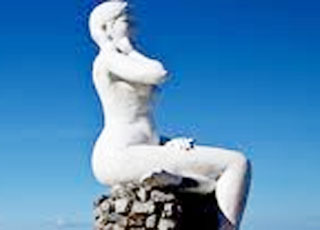Kep, Cambodia: Asia meets France by the seaside
16 Jan 2011
The sky was deep blue, the sand soft and sugary white, and the only sound to be heard was the gentle swish of water as small waves hit the shore and then retreated. White crabs scuttled out of sand holes and back again, and picture-perfect seashells, the type you normally only find in shops – glossy and perfectly curved – lay dotted all around.

Lying in the dappled shade of a stumpy tree on a beach on Koh Tonsay – a tiny island known to locals as Rabbit Island – just a few miles off the Cambodian coastal village of Kep, I felt an overwhelming calm. After a week in Kep we had taken a day trip to the island on our penultimate day. Tellingly, it had taken us this long to muster the energy.
Kep is a tantalising combination of faded French Indo-China glamour, Asian and French cuisine, and the clear waters and white sands of the tropical beachside. The village was popular with wealthy holidaymakers from the Thirties right up until the Khmer Rouge took over the country in the Seventies, when it faded from view for more than 30 years.
Even locals forgot its existence. "I grew up just 15 miles from here and I didn't know there was such a town as Kep until 2002," Lee Lim, now a resort manager in the village, told me.
Source = telegraph.co.uk

Lying in the dappled shade of a stumpy tree on a beach on Koh Tonsay – a tiny island known to locals as Rabbit Island – just a few miles off the Cambodian coastal village of Kep, I felt an overwhelming calm. After a week in Kep we had taken a day trip to the island on our penultimate day. Tellingly, it had taken us this long to muster the energy.
Kep is a tantalising combination of faded French Indo-China glamour, Asian and French cuisine, and the clear waters and white sands of the tropical beachside. The village was popular with wealthy holidaymakers from the Thirties right up until the Khmer Rouge took over the country in the Seventies, when it faded from view for more than 30 years.
Even locals forgot its existence. "I grew up just 15 miles from here and I didn't know there was such a town as Kep until 2002," Lee Lim, now a resort manager in the village, told me.
Source = telegraph.co.uk










